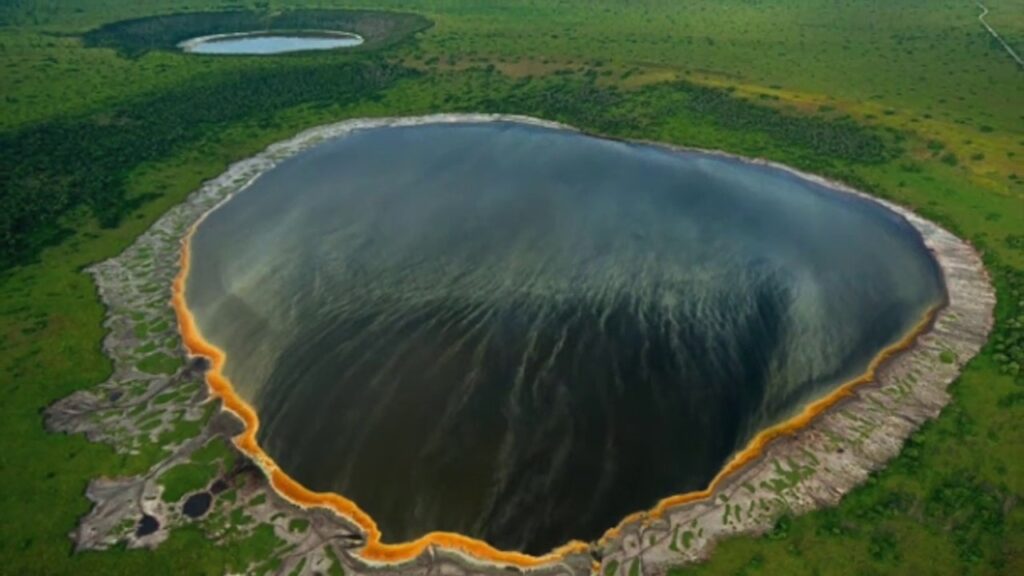Dive into the wonders of Lake Tanganyika: The Aquatic Ecology

If you're a nature enthusiast, then Lake Tanganyika might be one of the most fascinating marvels you would ever come across. It's not just any lake; it's the second-deepest freshwater lake in the world and sits at the heart of Africa, surrounded by stunning landscapes and vegetation that gives an impression of an undiscovered world below its glittering and tranquil surface.
¿Dónde se encuentra el lago Tanganica?
Located in the Great Rift Valley and known for its remarkable biological diversity, Tanganyika stretches through a length of about 676 km and is situated between Burundi, Congo, Tanzania, and Zambia. It's one of the oldest and largest freshwater lakes, with a depth of over 1,400 meters.
¿Cuáles son las características geográficas del Lago?
The lake is divided into three major drainage basins, and its middle depths have an atmospheric pressure that is equivalent to three times that of sea-level pressure. Its shores are lined with mountains that are over a kilometer high, making it a great habitat for various species to thrive in. The lake's water is also sparklingly clear, and its deep blue color is a sight to behold.
¿Qué hacía famoso al Lago Tanganyika?
The historical significance of Lake Tanganyika dates back to the time of explorers like Richard Burton and John Speke, who were on the hunt for the source of the Nile. Later, the Germans made Tanganyika a colony, with high economic importance and used it to gain wealth through the exploitation of its resources.
¿Qué hace que el Lago Tanganica sea único?
¿Qué especies se encuentran en el Lago Tanganyika?
The lake is a vast expanse of aquatic life, with more than 1,300 species of endemic fish that are yet to be explored. It's a mecca for biologists, especially for those studying the evolution of life on Earth. Over 95% of the species in the lake are endemic, which means they exist only here and nowhere else in the world.
¿Qué tipo de hábitats y ecosistemas existen en el lago?
There are various habitats present in the lake, such as rocky shores, sandy beaches, coral formations, deep-water trenches, and estuarine communities. These habitats support a diversity of animals, such as otters, crocodiles, and several species of birds that come to the shores to feed and nest.
¿Cómo se relacionan las especies en el lago Tanganyika?
¿Cómo se adaptan las especies del lago Tanganyika a su entorno?
Because of their diverse environments, the species in the lake have had to adapt to extreme conditions. For example, some fish have become filter feeders, living on detritus and algae. Others live in the sandy substrate feeding on insect larvae or plankton, while others live in the deepwater trenches hunting for other fish.
¿Qué tipo de interacción tienen los diferentes niveles tróficos en el lago?
The species in the lake have established a delicate balance, with one species feeding off another. For instance, some fish specialize in eating other fish's eggs, while others feed on the less adapted fish species. This balance is a significant factor in the lake's ecosystem health, and its disruption could lead to the extinction of some species.
¿Qué problemas enfrenta el lago Tanganyika?
¿Cuáles son los efectos del cambio climático en el lago?
One of the major challenges facing the lake today is climate change, with the rise in global temperatures causing the lake's water levels to fluctuate. This fluctuation has affected fishing activities and led to the decline of several fish species that have failed to adapt to the changing temperatures.
¿Cómo afecta la contaminación al lago y su ecología?
Pollution is another issue that affects the lake's ecosystem. The lake has suffered from overfishing and the dumping of untreated sewage. Also, several industries have poured their wastewater into the lake, creating a toxic environment for aquatic life, leading to the extinction of some species.
Conclusiones
Lake Tanganyika is a wonder of nature, a treasure trove of biodiversity that has fed many communities for generations. However, its ecological health is deteriorating, and we must act now before it's too late. Protecting the lake's habitat, conserving its biodiversity, curbing pollution, and reducing the impact of climate change is crucial if we want this treasure to be available for generations to come.
Preguntas Recurrentes
¿Qué es el lago Tanganyika?
El lago Tanganyika es un lago de agua dulce situado en el corazón de África, entre Burundi, Congo, Tanzania y Zambia.
¿Dónde se encuentra el lago Tanganyika?
El lago Tanganyika está ubicado en el este de África, en la Gran falla del Rift.
¿Qué hace que el lago Tanganyika sea tan especial?
El lago Tanganyika es especial por su alto nivel de diversidad biológica y por ser uno de los lagos más profundos del mundo.
¿Cuáles son las especies que habitan en el lago Tanganyika?
El lago es el hogar de más de 1,300 especies de peces endémicos y varias especies de animales que dependen del lago para sobrevivir, como nutrias y cocodrilos.
¿Qué problemas enfrenta el lago Tanganyika?
El lago enfrenta problemas como el cambio climático, la contaminación y la pesca excesiva, lo que pone en peligro su biodiversidad y puede llevar a la extinción de varias especies.
Deja una respuesta

Entradas relacionadas